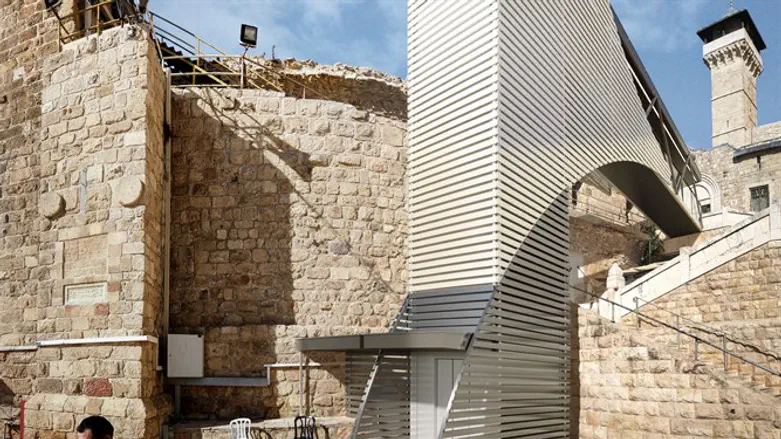
Following a directive of outgoing Defense Minister Naftali Bennett, the Coordinator of Government Activities in the Territories (COGAT) announced on May 12 an expropriation order for the Tomb of Patriarchs accessibility project, which will include the construction of an elevator and access path to the site for the purpose of allowing people with disabilities to ascend from the parking lot to the site plaza.
The accessibility plan was designed by a dedicated professional team, while maintaining a high standard of accessibility, and taking into account the engineering, religious, and archaeological complexity of the site.
The architects behind the project, Chaim Kazes and Shimon Kedar, spoke with Arutz Sheva.
"We'll be working in two central locations: One is the major extension that we want to access and there is the second floor where Jews pray for a majority of the year. Currently, people with disabilities cannot reach either one."
The two said they had "…contacted conservation consultants who have studied the tomb for many years. We decided to do everything within our power to minimize damage to existing structures. We were faced with a dilemma: as planners, we have to design something that looks ancient and attempts to retrace the past. In most cases, the results are not good because it is difficult to compete with architecture that was done before. Between a hundred and three thousand, five hundred years ago."
"We created an elevator shaft that will be located in the plaza behind the inspection post, and alongside the elevator structure, we created a floating bridge that will be extended directly from the elevator to the entrance on the second floor. So except for where the elevator is to be located and there is no way to avoid digging, we didn't touch anything. The bridge was meant to float in order to avoid leaning on the existing edifice…"
The planning stage itself was a life-changing task for one of the architects, which he approached in awe. "We approached the planning with a sense of awe and astonishment. Whenever constructing something in a sacred place like this with historical significance to different religions, you always ask yourself how it should be done. We were also working on a very tight deadline. It's difficult on a personal level to imagine it…you need to be as careful as possible with every decision and remind yourself to be thorough in order to get do the best and most respectful results for the place. On the one hand, you're trying to create something with a modern appearance and at the same time, doing your best to leave as much of it intact as possible."